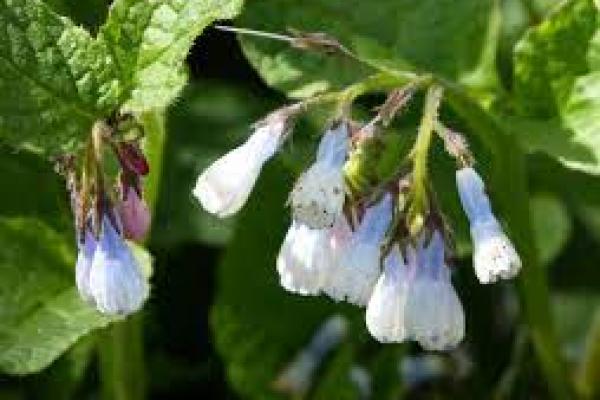Comfrey

Symphytum officinale
This useful, abundant plant with a long history of tissue repair (common name Knitbone) is the chief ingredient in the bruise ointment we give out in the refugee camps in Northern France.
The leaves, stems and roots of Comfrey contain mucilage; a jelly like substance that is anti-inflammatory. This contains a phytochemical compound called allantoin which promotes cell proliferation of connective tissue.
Comfrey is great for bruises, sprains and joint inflammation. It speeds up healing so effectively that it should be avoided in deeper wounds where it is important that the tissue heals from the inside outwards.
Historically Comfrey has been taken internally, but contemporary research questions safety due to the presence of compounds that may be toxic to the liver when ingested. Whilst the herbal and scientific communities unravel the mysteries of this important medicinal plant, it is recommended to stick to topical use, which is safe and very effective. This may be in the form of oils, ointments or even fresh plant material directly on an inflamed joint, and held in place with a bandage.
To learn more about acute first aid work in Calais and Dunkirk click here. There are various ways you can be contribute to making medicines:
- Making a component part infused oil
- Making a complete recipe bruise ointment